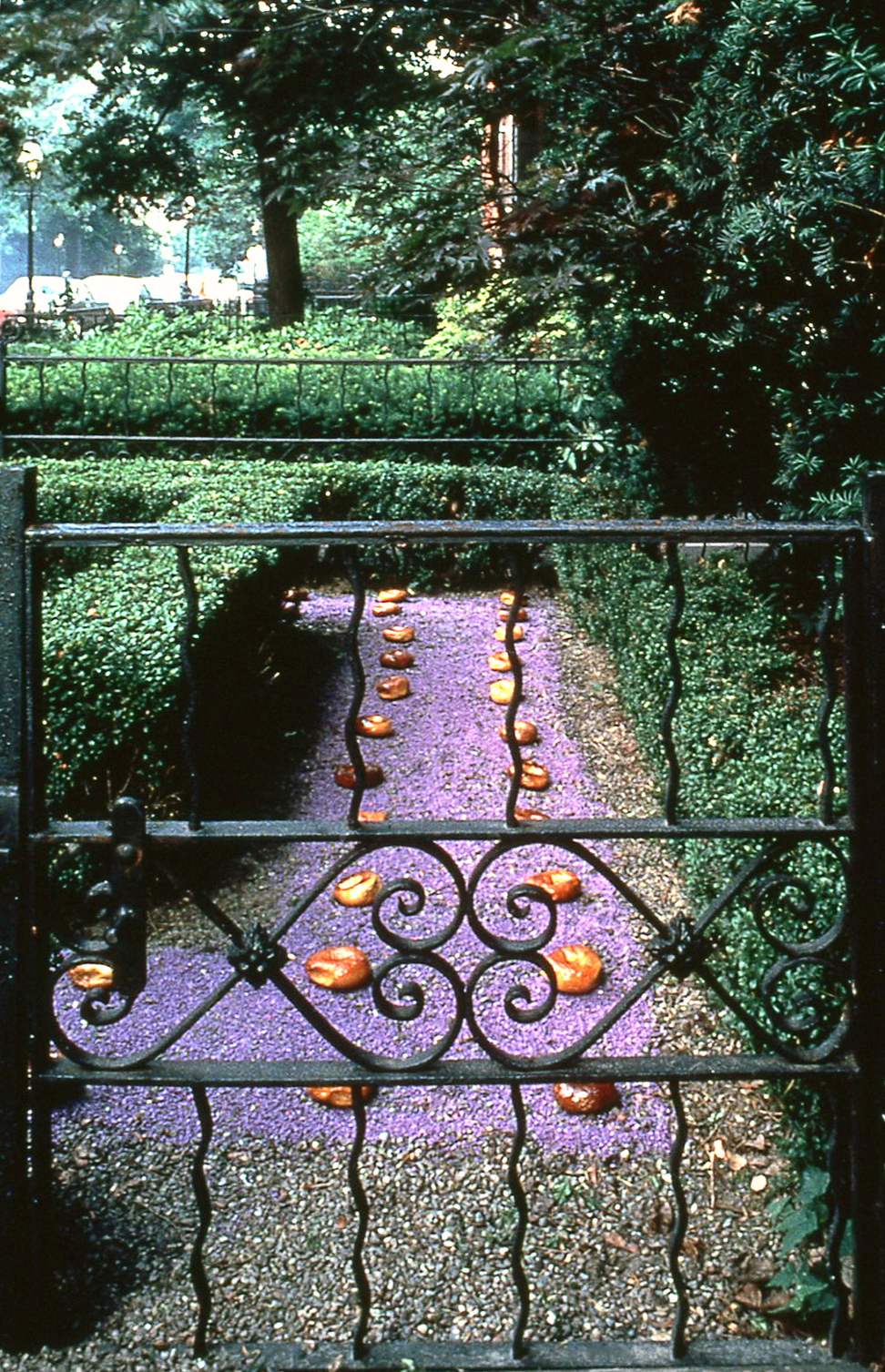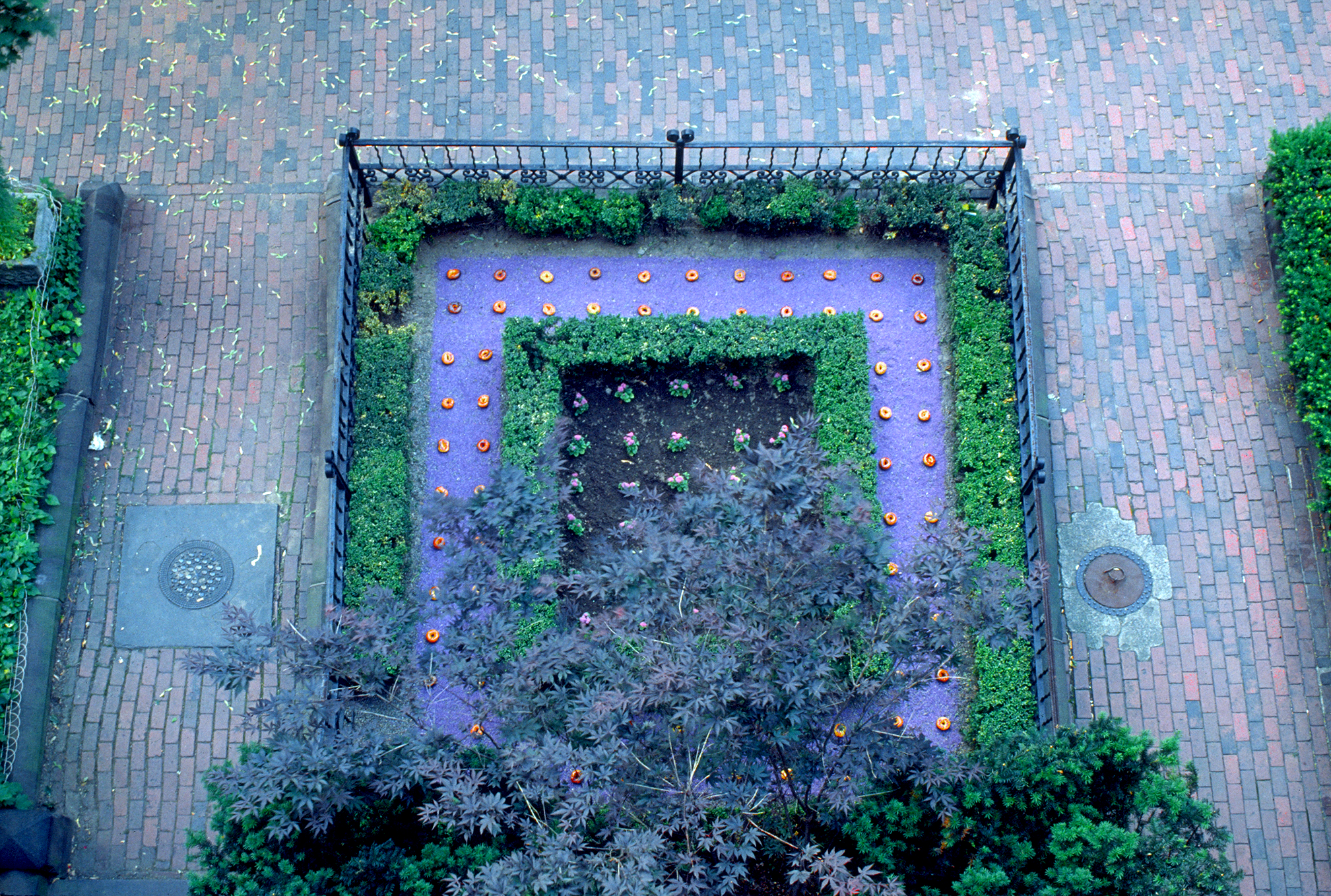Bagel Garden
Location Boston, MA, USA | Client Martha Schwartz | Size 484 square meters | Status Completed 1979 | Tags Culture and Art
Martha Schwartz’s Bagel Garden sent ripples through the landscape architecture profession.
Trained as an artist, Martha grew frustrated working as an apprentice in a Cambridge landscape architectural office. She felt that landscape design used only a very specific design language and modernist style, focusing on quality materials and fine details.
The Bagel Garden started merely as a bit of fun.
While her husband was away on business, Martha decided to do something about the untidy 22-square foot garden of their Georgian terraced house in Back Bay in Boston, USA.
She created a design using only materials which could be bought for less than $100 in the local neighborhood - which had a delicatessan, an aquarium, and a garden shop. Between the outer and inner squares of the 16-inch high boxwood hedges, she arranged a 30-inch wide strip of purple aquarium gravel dominated by a grid of eight dozen bagels. Each bagel was dipped in marine spar for weatherproofing. Inside the inner square of trimmed hedge, she planted 30 purple Ageratum to match the gravel and complement an existing Japanese maple.
The result was a stage set for her husband’s return after his week away - an ode to Martha’s favorite food. “Bagels are humble, homey, and ethnic,” she explains. “Besides, I could get many of them inexpensively.
However, “despite the many garden party guests who were helping us celebrate the installation and his return, he was not particularly amused.” The family left within days for a summer in Europe, and the bagels eventually decomposed.
Friends encouraged Martha to send photographs of her garden to Landscape Architecture Magazine, the official publication of the American Society of Landscape Architects. The editor of the magazine, Grady Clay, responded, saying he would like to publish this, as long as she could write an article explain why she had created the Bagel Garden.
The article, written slightly tongue-in-cheek, explained that the scheme was based on French renaissance gardens, which were designed as stage sets for dances and celebrations. It argued that the bagel is an appropriate landscape material. It is inexpensive (far less costly than plant materials), available (from the corner deli), easy to maintain (requiring no watering or weeding), requires no sun (important in a north-facing garden) and is biodegradable.
Martha pointed out that a wealth of new ideas in materials and spatial arrangements can be translated from the art world into landscape. The increasing costs of traditional landscape materials and construction methods placed landscape architecture well beyond the financial reach of people who could most benefit from good design, particularly those living in depressed urban areas. Design does not rely on materials, “it is the relationship of forms in space.”
In January 1980, the Bagel Garden featured on the front cover of Landscape Architecture Magazine
The publication brought considerable controversy. Readers’ comments published in May 1980 covered a wide range of opinions, including a great deal of criticism, and the debate eventually led to the termination of Grady Clay’s editorship. However, the conversations about landscape and art, landscape as conceptual, and the freedom to debate the nature of landscape design, resonated with the wider profession.
Ultimately the Bagel Garden started landscape design’s transformation from “pretty faux natural greenery” into asking bold questions about what landscape is, and how it impacts on people who live in and interact with it. These are questions that Martha Schwartz Partners tackles to this day.


